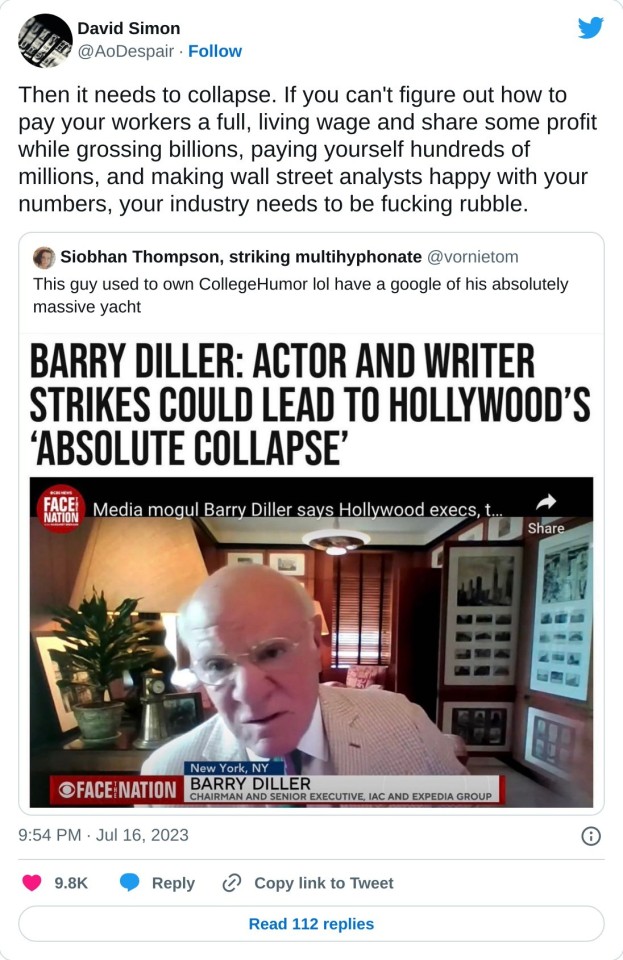Text
Calvin and Hobbs is a master work.
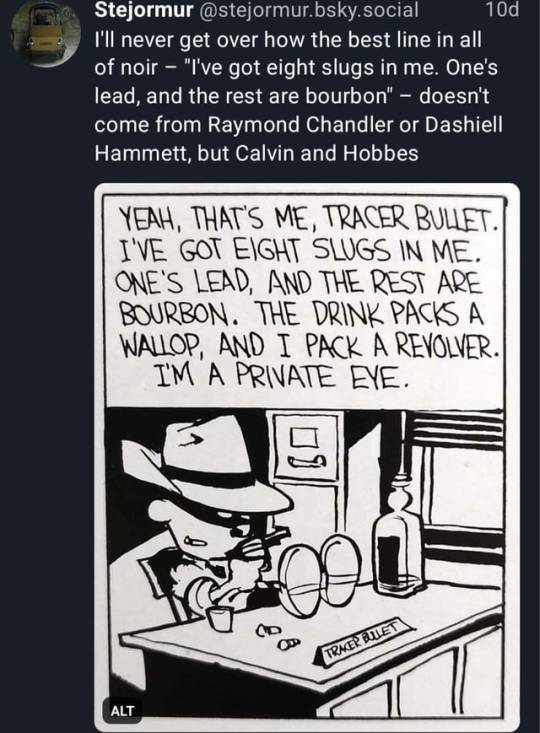

40K notes
·
View notes
Text
Doom soundtrack intensifies

A maquette of the invisible id monster from Forbidden Planet (1956).

The animated monster as it appeared in the film, lit up by energy from a forcefield fence and ray guns.
231 notes
·
View notes
Text
I keep thinking this had become common knowledge but apparently not, this is a good reminder.
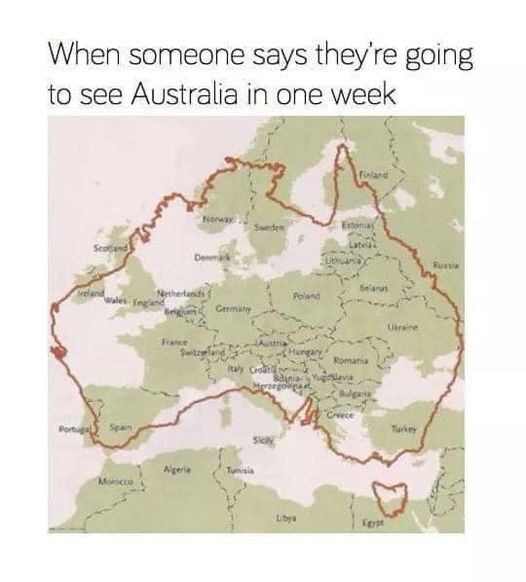
In their defence, a lot of it is sand.
36K notes
·
View notes
Text
It all started with a mouse
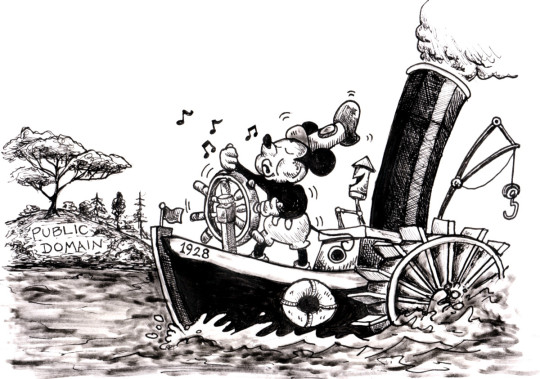
For the public domain, time stopped in 1998, when the Sonny Bono Copyright Act froze copyright expirations for 20 years. In 2019, time started again, with a massive crop of works from 1923 returning to the public domain, free for all to use and adapt:
https://web.law.duke.edu/cspd/publicdomainday/2019/
No one is better at conveying the power of the public domain than Jennifer Jenkins and James Boyle, who run the Duke Center for the Study of the Public Domain. For years leading up to 2019, the pair published an annual roundup of what we would have gotten from the public domain in a universe where the 1998 Act never passed. Since 2019, they've switched to celebrating what we're actually getting each year. Last year's was a banger:
https://pluralistic.net/2022/12/20/free-for-2023/#oy-canada
But while there's been moderate excitement at the publicdomainification of "Yes, We Have No Bananas," AA Milne's "Now We Are Six," and Sherlock Holmes, the main event that everyone's anticipated arrives on January 1, 2024, when Mickey Mouse enters the public domain.
The first appearance of Mickey Mouse was in 1928's Steamboat Willie. Disney was critical to the lobbying efforts that extended copyright in 1976 and again in 1998, so much so that the 1998 Act is sometimes called the Mickey Mouse Protection Act. Disney and its allies were so effective at securing these regulatory gifts that many people doubted that this day would ever come. Surely Disney would secure another retrospective copyright term extension before Jan 1, 2024. I had long arguments with comrades about this – people like Project Gutenberg founder Michael S Hart (RIP) were fatalistically certain the public domain would never come back.
But they were wrong. The public outrage over copyright term extensions came too late to stave off the slow-motion arson of the 1976 and 1998 Acts, but it was sufficient to keep a third extension away from the USA. Canada wasn't so lucky: Justin Trudeau let Trump bully him into taking 20 years' worth of works out of Canada's public domain in the revised NAFTA agreement, making swathes of works by living Canadian authors illegal at the stroke of a pen, in a gift to the distant descendants of long-dead foreign authors.
Now, with Mickey's liberation bare days away, there's a mounting sense of excitement and unease. Will Mickey actually be free? The answer is a resounding YES! (albeit with a few caveats). In a prelude to this year's public domain roundup, Jennifer Jenkins has published a full and delightful guide to The Mouse and IP from Jan 1 on:
https://web.law.duke.edu/cspd/mickey/
Disney loves the public domain. Its best-loved works, from The Sorcerer's Apprentice to Sleeping Beauty, Pinnocchio to The Little Mermaid, are gorgeous, thoughtful, and lively reworkings of material from the public domain. Disney loves the public domain – we just wish it would share.
Disney loves copyright's other flexibilities, too, like fair use. Walt told the papers that he took his inspiration for Steamboat Willie from Charlie Chaplin and Douglas Fairbanks, making fair use of their performances to imbue Mickey with his mischief and derring do. Disney loves fair use – we just wish it would share.
Disney loves copyright's limitations. Steamboat Willie was inspired by Buster Keaton's silent film Steamboat Bill (titles aren't copyrightable). Disney loves copyright's limitations – we just wish it would share.
As Jenkins writes, Disney's relationship to copyright is wildly contradictory. It's the poster child for the public domain's power as a source of inspiration for worthy (and profitable) new works. It's also the chief villain in the impoverishment and near-extinction of the public domain. Truly, every pirate wants to be an admiral.
Disney's reliance on – and sabotage of – the public domain is ironic. Jenkins compares it to "an oil company relying on solar power to run its rigs." Come January 1, Disney will have to share.
Now, if you've heard anything about this, you've probably been told that Mickey isn't really entering the public domain. Between trademark claims and later copyrightable elements of Mickey's design, Mickey's status will be too complex to understand. That's totally wrong.

Jenkins illustrates the relationship between these three elements in (what else) a Mickey-shaped Venn diagram. Topline: you can use all the elements of Mickey that are present in Steamboat Willie, along with some elements that were added later, provided that you make it clear that your work isn't affiliated with Disney.
Let's unpack that. The copyrightable status of a character used to be vague and complex, but several high-profile cases have brought clarity to the question. The big one is Les Klinger's case against the Arthur Conan Doyle estate over Sherlock Holmes. That case established that when a character appears in both public domain and copyrighted works, the character is in the public domain, and you are "free to copy story elements from the public domain works":
https://freesherlock.files.wordpress.com/2013/12/klinger-order-on-motion-for-summary-judgment-c.pdf
This case was appealed all the way to the Supreme Court, who declined to hear it. It's settled law.
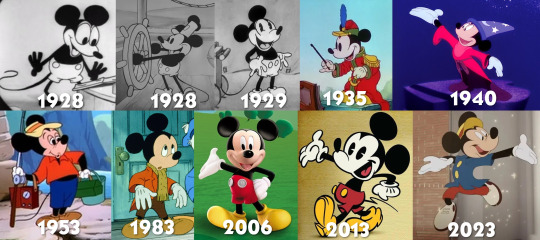
So, which parts of Mickey aren't going into the public domain? Elements that came later: white gloves, color. But that doesn't mean you can't add different gloves, or different colorways. The idea of a eyes with pupils is not copyrightable – only the specific eyes that Disney added.
Other later elements that don't qualify for copyright: a squeaky mouse voice, being adorable, doing jaunty dances, etc. These are all generic characteristics of cartoon mice, and they're free for you to use. Jenkins is more cautious on whether you can give your Mickey red shorts. She judges that "a single, bright, primary color for an article of clothing does not meet the copyrightability threshold" but without settled law, you might wanna change the colors.
But what about trademark? For years, Disney has included a clip from Steamboat Willie at the start of each of its films. Many observers characterized this as a bid to create a de facto perpetual copyright, by making Steamboat Willie inescapably associated with products from Disney, weaving an impassable web of trademark tripwires around it.
But trademark doesn't prevent you from using Steamboat Willie. It only prevents you from misleading consumers "into thinking your work is produced or sponsored by Disney." Trademarks don't expire so long as they're in use, but uses that don't create confusion are fair game under trademark.
Copyrights and trademarks can overlap. Mickey Mouse is a copyrighted character, but he's also an indicator that a product or service is associated with Disney. While Mickey's copyright expires in a couple weeks, his trademark doesn't. What happens to an out-of-copyright work that is still a trademark?
Luckily for us, this is also a thoroughly settled case. As in, this question was resolved in a unanimous 2000 Supreme Court ruling, Dastar v. Twentieth Century Fox. A live trademark does not extend an expired copyright. As the Supremes said:
[This would] create a species of mutant copyright law that limits the public’s federal right to copy and to use expired copyrights.
This elaborates on the Ninth Circuit's 1996 Maljack Prods v Goodtimes Home Video Corp:
[Trademark][ cannot be used to circumvent copyright law. If material covered by copyright law has passed into the public domain, it cannot then be protected by the Lanham Act without rendering the Copyright Act a nullity.
Despite what you might have heard, there is no ambiguity here. Copyrights can't be extended through trademark. Period. Unanimous Supreme Court Decision. Boom. End of story. Done.
But even so, there are trademark considerations in how you use Steamboat Willie after Jan 1, but these considerations are about protecting the public, not Disney shareholders. Your uses can't be misleading. People who buy or view your Steamboat Willie media or products have to be totally clear that your work comes from you, not Disney.

Avoiding confusion will be very hard for some uses, like plush toys, or short idents at the beginning of feature films. For most uses, though, a prominent disclaimer will suffice. The copyright page for my 2003 debut novel Down and Out in the Magic Kingdom contains this disclaimer:
This novel is a work of fiction, set in an imagined future. All the characters and events portrayed in this book, including the imagined future of the Magic Kingdom, are either fictitious or are used fictitiously. The Walt Disney Company has not authorized or endorsed this novel.
https://us.macmillan.com/books/9781250196385/downandoutinthemagickingdom
Here's the Ninth Circuit again:
When a public domain work is copied, along with its title, there is little likelihood of confusion when even the most minimal steps are taken to distinguish the publisher of the original from that of the copy. The public is receiving just what it believes it is receiving—the work with which the title has become associated. The public is not only unharmed, it is unconfused.
Trademark has many exceptions. The First Amendment protects your right to use trademarks in expressive ways, for example, to recreate famous paintings with Barbie dolls:
https://www.copyright.gov/fair-use/summaries/mattel-walkingmountain-9thcir2003.pdf
And then there's "nominative use": it's not a trademark violation to use a trademark to accurately describe a trademarked thing. "We fix iPhones" is not a trademark violation. Neither is 'Works with HP printers.' This goes double for "expressive" uses of trademarks in new works of art:
https://en.wikipedia.org/wiki/Rogers_v._Grimaldi
What about "dilution"? Trademark protects a small number of superbrands from uses that "impair the distinctiveness or harm the reputation of the famous mark, even when there is no consumer confusion." Jenkins says that the Mickey silhouette and the current Mickey character designs might be entitled to protection from dilution, but Steamboat Willie doesn't make the cut.
Jenkins closes with a celebration of the public domain's ability to inspire new works, like Disney's Three Musketeers, Disney's Christmas Carol, Disney's Beauty and the Beast, Disney's Around the World in 80 Days, Disney's Alice in Wonderland, Disney's Snow White, Disney's Hunchback of Notre Dame, Disney's Sleeping Beauty, Disney's Cinderella, Disney's Little Mermaid, Disney's Pinocchio, Disney's Huck Finn, Disney's Robin Hood, and Disney's Aladdin. These are some of the best-loved films of the past century, and made Disney a leading example of what talented, creative people can do with the public domain.
As of January 1, Disney will start to be an example of what talented, creative people give back to the public domain, joining Dickens, Dumas, Carroll, Verne, de Villeneuve, the Brothers Grimm, Twain, Hugo, Perrault and Collodi.
Public domain day is 17 days away. Creators of all kinds: start your engines!

If you'd like an essay-formatted version of this post to read or share, here's a link to it on pluralistic.net, my surveillance-free, ad-free, tracker-free blog:
https://pluralistic.net/2023/12/15/mouse-liberation-front/#free-mickey

Image:
Doo Lee (modified)
https://web.law.duke.edu/sites/default/files/images/centers/cspd/pdd2024/mickey/Steamboat-WIllie-Enters-Public-Domain.jpeg
CC BY 4.0
https://creativecommons.org/licenses/by/4.0/deed.en
6K notes
·
View notes
Text
Re-blogging as too many people take memes at face value.
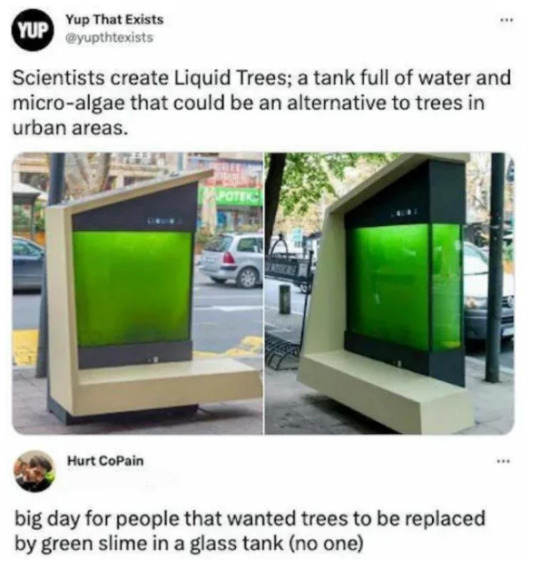
101K notes
·
View notes
Photo
This is the future they promised us...
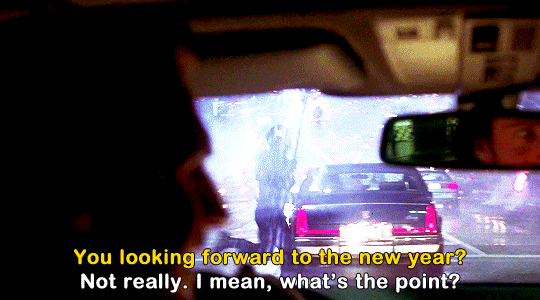
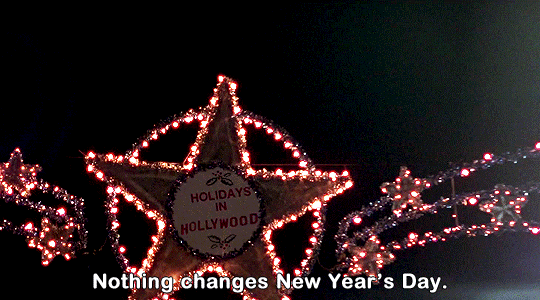
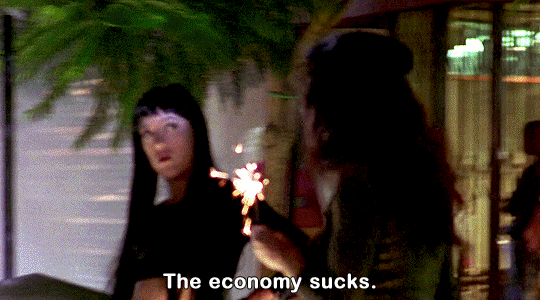
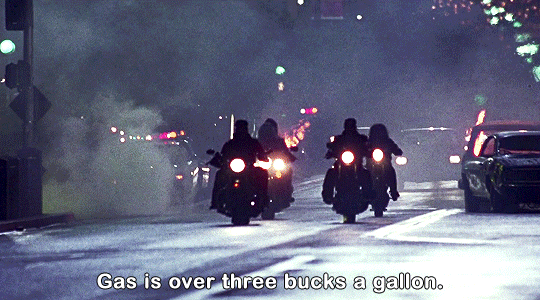
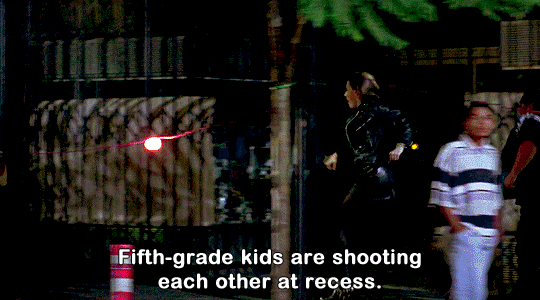
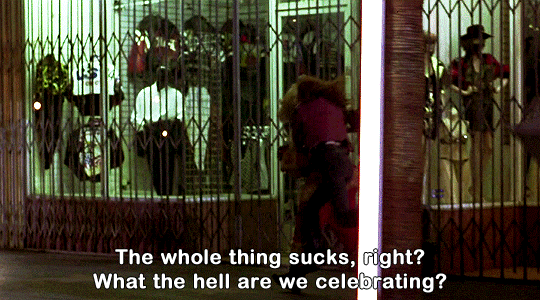
Strange Days (1995) dir. Kathryn Bigelow
3K notes
·
View notes
Text
In Plagiarism and You(Tube), Hbomb says "If you consider something so obscure you can get away with stealing it, you do not respect it." Save that line for the next time someone tries to tell you that Roy Lichtenstein brought respect to comics as art.
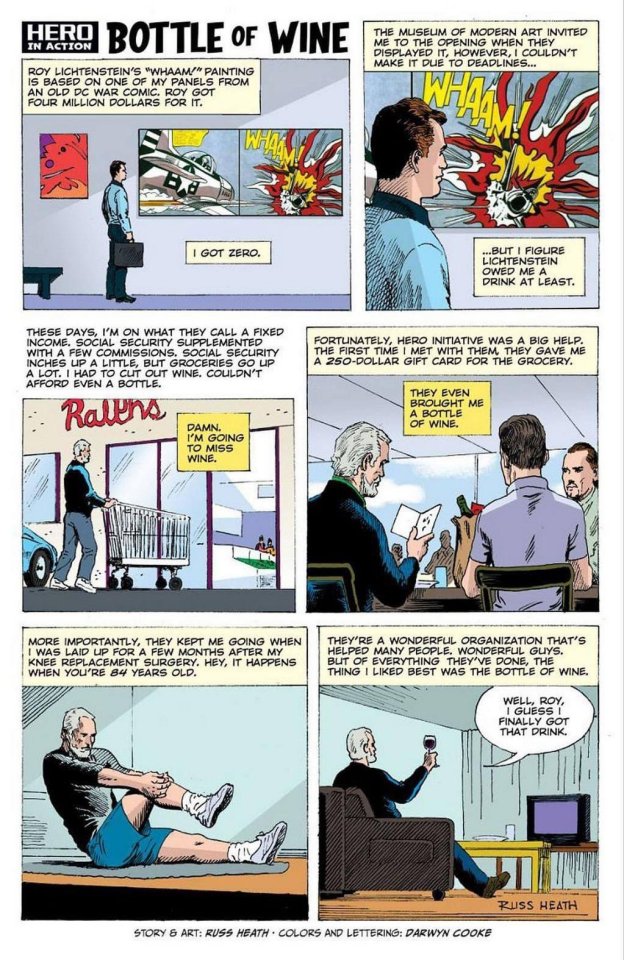
It's since been pointed out that while Lichtenstein did copy one of Russ Heath's drawings of an airplane getting hit, the painting depicted above was actually copied off Irv Norvick, because Lichtenstein did this so many times to so many comic artists.

In Lichtenstein's defense, he was doing this in a time when comic artists frequently weren't even credited in the issues themselves. In his condemnation, he never even tried to check, nor has he made any move to pay or credit any of the comic artists who recognized their own work later on. Rather than elevating the "low art" of comics, he was widening the gap of financial success and respect even further.
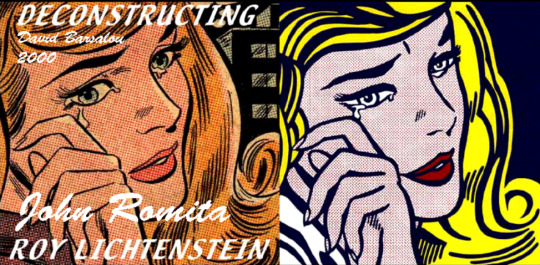
The Hbomberguy of this story is art historian David Barsalou, who has now spent decades tracking down the original art and the names of the original artists used in Lichtenstein's most famous output. Here's the full flickr gallery for the Deconstructing Roy Lichtenstein project. Frequently copied were Tony Abruzzo, Ted Galindo, Mike Sekowsky, Joe Kubert, Jerry Grandenetti, and dozens more Golden Age artists who aren't very well known in comics circles, let alone art history books. Many of them died in poverty. That's something that the Hero Initiative, mentioned in Russ Heath's comic above, aims to prevent.
Also, Lichtenstein didn't even paint Ben-Day dots. That's a specific thing.
13K notes
·
View notes
Text
Remember if you’re out at a store and someone says “This is a robbery” you can say “no it’s not” and then the robber will leave because theyre a robber and this is no longer a robbery .
214K notes
·
View notes
Text
Really like the art. The sleek, curvy (yet still tanky thanks to the proportions) and colorful chassis cutting through the boxier, industrial olive drab mech with sparks and shrapnel everywhere. Love all the detail and use of color, one of the more original looks for a chain sword as well.
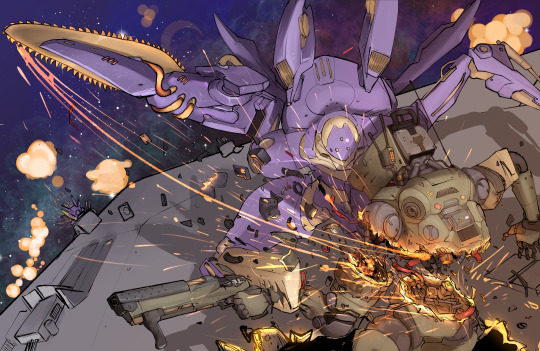
Lancer comm wip depicting some boarding actions
426 notes
·
View notes
Text
Lets Talk About Battletech
Felt like gushing about the one sci-fi series that I have always nerded out over, so lets talk about big stompy robot and one of the last bastions of the real-robot mecha sub-genre in this cyberpunk world we now live in.
My introduction to Battletech was the Animated series that aired for one season in 1994. It was far from the best cartoon, mostly serving as a meme generator for the current fandom. Exo-Squad was on their second season by that time and had superior animation and story telling but there was something about Battletech that kept me and my friends talking about it. That something was the Battletech universes itself. As flawed as the cartoon was, it did a great job summing up the Inner Sphere in it’s 60 second intro. The show leaves out a lot but if it’s mission was a simple introduction, sampler to the much broader Battletech Universe, mission accomplished.
After the cartoon ended, my buddies found the Battletech novel series at the local book store, that lead us to find the Battletech 3rd edition table top game and in 1995, Activsion published MechWarrior 2: 31st Century Combat. After that, I was unapologetic Battletech nerd.
What was it that made me fall in love with the game? Allot of little things. The ‘Mechs that took center stage in Battletech had wight, they looked and felt like combat machines. Each Battlemech looks purpose built for war, walking weapon platforms that would crush foes under foot given the chance. The stories themselves are not award winning but most are relatable. Each conflict has petty beginning and costly consequences. Few things are black and white, war itself was the enemy but was also celebrated. Each character had their own self serving motivations rather than some altruistic idea, be it seeking honor and glory or avenging their home planet lost to conflict. It wasn’t ultra-bleak like 40K but it was acknowledging there is little black and white in war, just allot of gray. You are piloting a towering killing machine and winning sometimes means just getting back alive after you run out of ammo, your armor has been shredded and the other mechs are hunting you down.
As with any community built around a war game, you do run into occasional jerks you need to block but I found most of my interaction with fellow Battletech fans to be good ones. Some of my most cherish from my childhood was playing the table top with my school yard friends or talking about that stupid cartoon. Made new friends simple sharing Battletech fan art and still enjoy talking about Battlemechs with my current social group when I can.
Coming full circle; If that stupid, stupid cartoon can teach us anything, don’t be petty. It’s far easier to make enemies than allies and in this world of gray, do the right thing when you can… that and Nicolai Malthus was an ass... sorry Jade Falcon fans but you know why he’s the meme.
86 notes
·
View notes
Photo
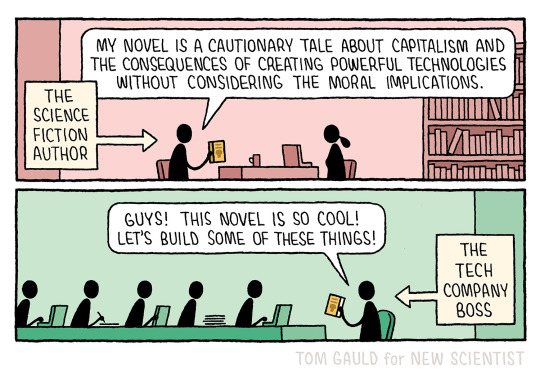
My cartoon for the latest issue of New Scientist.
36K notes
·
View notes
Photo
This is the future they promised us.
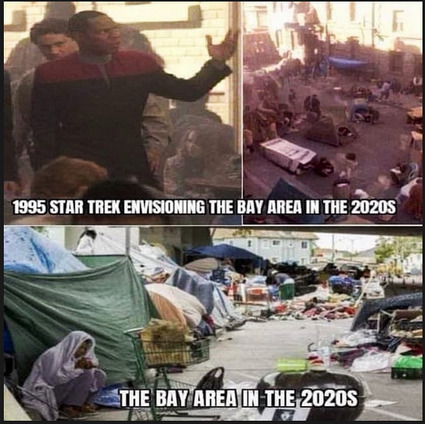
50 notes
·
View notes
Text
Saving these pictures that have been posted for reference. Tried a few swamp/marsh scenes in the best that where meant to be creepy but it didn’t work out, my color pallet was too vibrant. Swamps and marshes can be very colorful and beautiful like with any other landscape full of water and life. But now I know what I was missing, overcast. The calm waters reflects the grey clouds above as well as the surrounding plants and trees creating a much more muted scene. Add the mist from the changing temperatures and the detail surrounding start to become more and more blur together, more mysterious, more eerie.


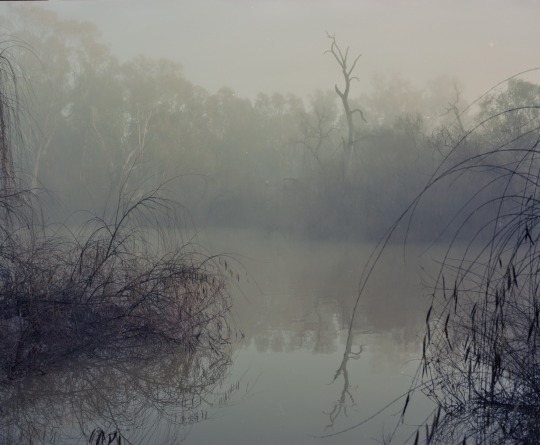


339 notes
·
View notes
Photo
A great comic always worth re-blogging.


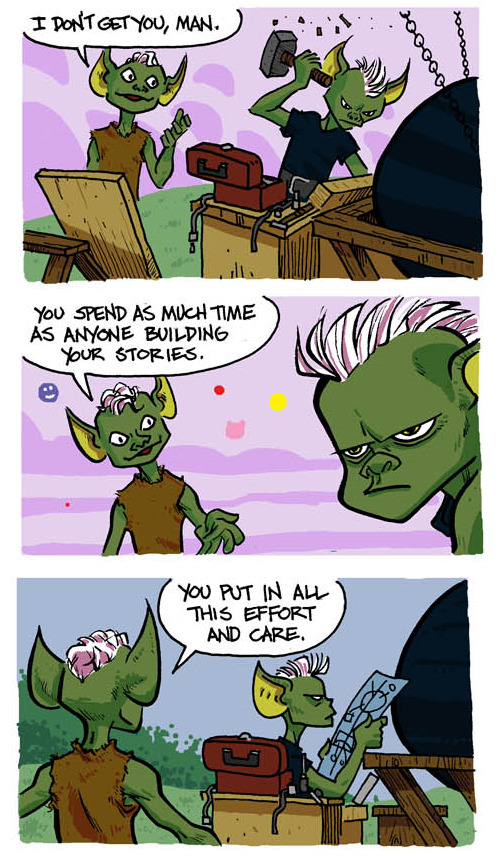

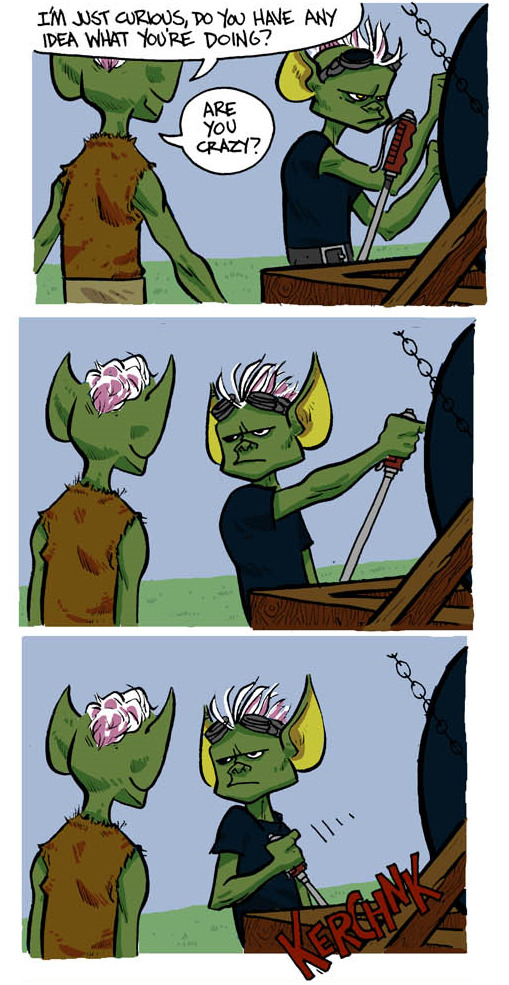




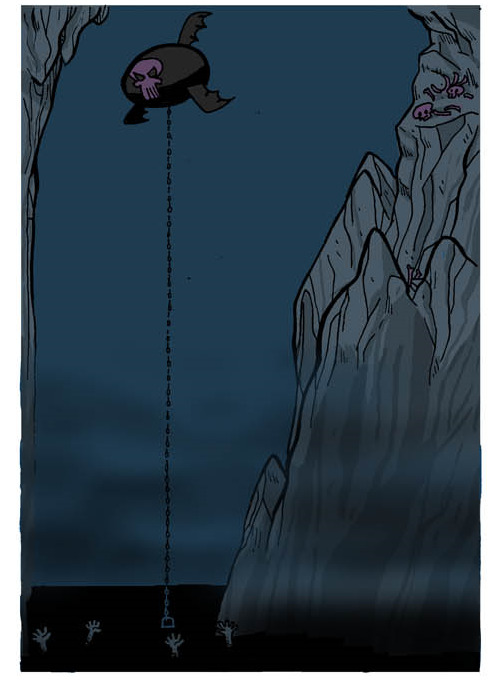

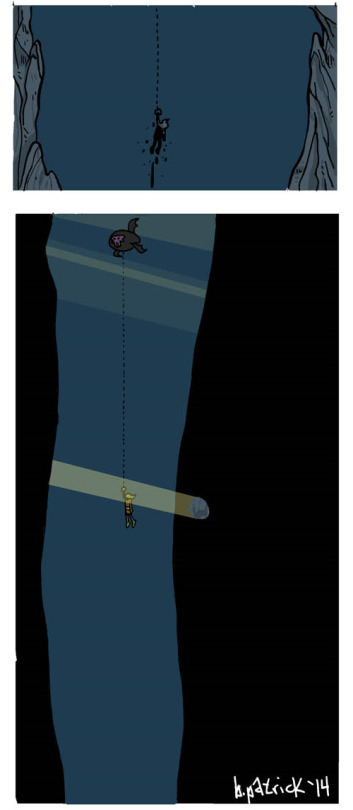
Different Stories Resonate with Different People
484K notes
·
View notes
Photo

Kilroy Was Here!
He’s engraved in stone in the National World War II Memorial in Washington, DC – back in a small alcove where very few people have seen it. For the WWII generation, this will bring back memories. For younger folks, it’s a bit of trivia that is an intrinsic part of American history and legend.
Anyone born between 1913 to about 1950, is very familiar with Kilroy. No one knew why he was so well known….but everybody seemed to get into it. It was the fad of its time!
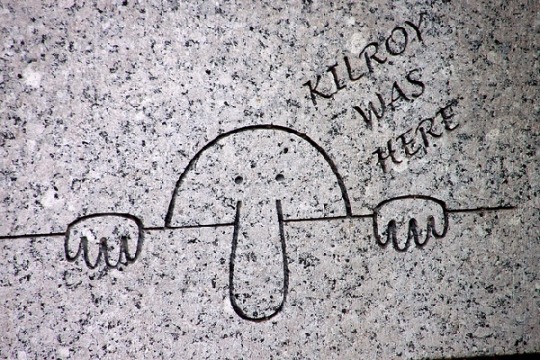
At the National World War II Memorial in Washington, DC
So who was Kilroy?
In 1946 the American Transit Association, through its radio program, “Speak to America,” sponsored a nationwide contest to find the real Kilroy….now a larger-than-life legend of just-ended World War II….offering a prize of a real trolley car to the person who could prove himself to be the genuine article.

Almost 40 men stepped forward to make that claim, but only James Kilroy from Halifax, Massachusetts, had credible and verifiable evidence of his identity.
“Kilroy” was a 46-year old shipyard worker during World War II (1941-1945) who worked as a quality assurance checker at the Fore River Shipyard in Quincy, Massachusetts (a major shipbuilder for the United States Navy for a century until the 1980s).
His job was to go around and check on the number of rivets completed. (Rivets held ships together before the advent of modern welding techniques.) Riveters were on piece work wages….so they got paid by the rivet. He would count a block of rivets and put a check mark in semi-waxed lumber chalk (similar to crayon), so the rivets wouldn’t be counted more than once.

A warship hull with rivets
When Kilroy went off duty, the riveters would surreptitiously erase the mark. Later, an off-shift inspector would come through and count the rivets a second time, resulting in double pay for the riveters!
One day Kilroy’s boss called him into his office. The foreman was upset about unusually high wages being “earned” by riveters, and asked him to investigate. It was then he realized what had been going on.
The tight spaces he had to crawl in to check the rivets didn’t lend themselves to lugging around a paint can and brush, so Kilroy decided to stick with the waxy chalk. He continued to put his check mark on each job he inspected, but added ”KILROY WAS HERE!“ in king-sized letters next to the check….and eventually added the sketch of the guy with the long nose peering over the fence….and that became part of the Kilroy message.
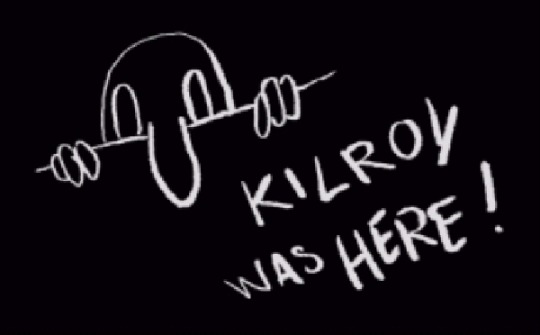
Kilroy’s original shipyard inspection “trademark” during World War II
Once he did that, the riveters stopped trying to wipe away his marks.
Ordinarily the rivets and chalk marks would have been covered up with paint. With World War II on in full swing, however, ships were leaving the Quincy Yard so fast that there wasn’t time to paint them. As a result, Kilroy’s inspection “trademark” was seen by thousands of servicemen who boarded the troopships the yard produced.
His message apparently rang a bell with the servicemen, because they picked it up and spread it all over the European and the Pacific war zones.
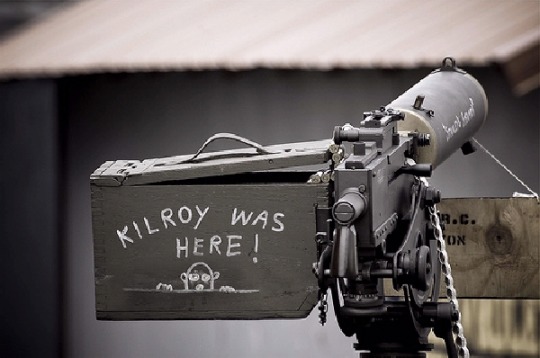
Before war’s end, “Kilroy” had been here, there, and everywhere on the long hauls to Berlin and Tokyo.
To the troops outbound in those ships, however, he was a complete mystery; all they knew for sure was that someone named Kilroy had “been there first.” As a joke, U.S. servicemen began placing the graffiti wherever they landed, claiming it was already there when they arrived.

As World War II wore on, the legend grew. Underwater demolition teams routinely sneaked ashore on Japanese-held islands in the Pacific to map the terrain for coming invasions by U.S. troops (and thus, presumably, were the first GI’s there). On one occasion, however, they reported seeing enemy troops painting over the Kilroy logo!
Kilroy became the U.S. super-GI who had always “already been” wherever GIs went. It became a challenge to place the logo in the most unlikely places imaginable. (It is said to now be atop Mt. Everest, the Statue of Liberty, the underside of the Arc de Triomphe in Paris, and even scrawled in the dust on the moon by the American astronauts who walked there between 1969 and 1972.
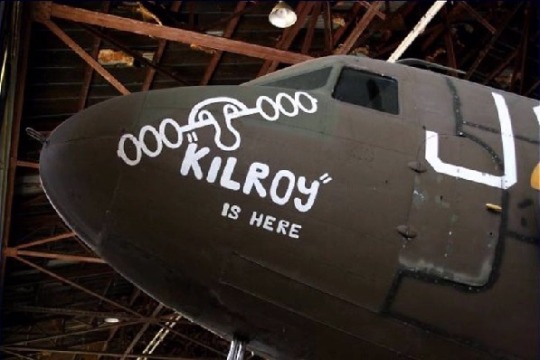
In 1945, as World War II was ending, an outhouse was built for the exclusive use of Allied leaders Harry Truman, Joseph Stalin, and Winston Churchill at the Potsdam Conference. It’s first occupant was Stalin, who emerged and asked his aide (in Russian), “Who is Kilroy?”
To help prove his authenticity in 1946, James Kilroy brought along officials from the shipyard and some of the riveters. He won the trolley car….which he attached to the Kilroy home and used to provide living quarters for six of the family’s nine children….thereby solving what had become an acute housing crisis for the Kilroys.
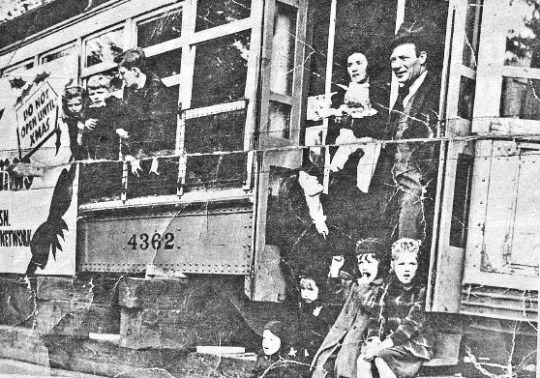
The new addition to the Kilroy family home.
* * * *
And the tradition continues into the 21st century…

In 2011 outside the now-late-Osama Bin Laden’s hideaway house in Abbottabad, Pakistan….shortly after the al-Qaida-terrorist was killed by U.S. Navy SEALs.
>>Note: The Kilroy graffiti on the southwest wall of the Bin Laden compound pictured above was real (not digitally altered with Microsoft Paint, as postulated by some). The entire compound was leveled in 2012 for redevelopment by a Pakistani company as an amusement park….and to avoid it becoming a shrine to Bin Laden’s nefarious memory.
* * * *
A personal note….
My Dad’s trademark signature on cards, letters and notes to my sisters and I for the first 50 or so years of our lives (until we lost him to cancer) was to add the image of “Kilroy” at the end. We kids never ceased to get a thrill out of this….even as we evolved into adulthood.
To this day, the “Kilroy” image brings back a vivid image of my awesome Dad into my head….and my heart!
Dad: This one’s for you!

35K notes
·
View notes

